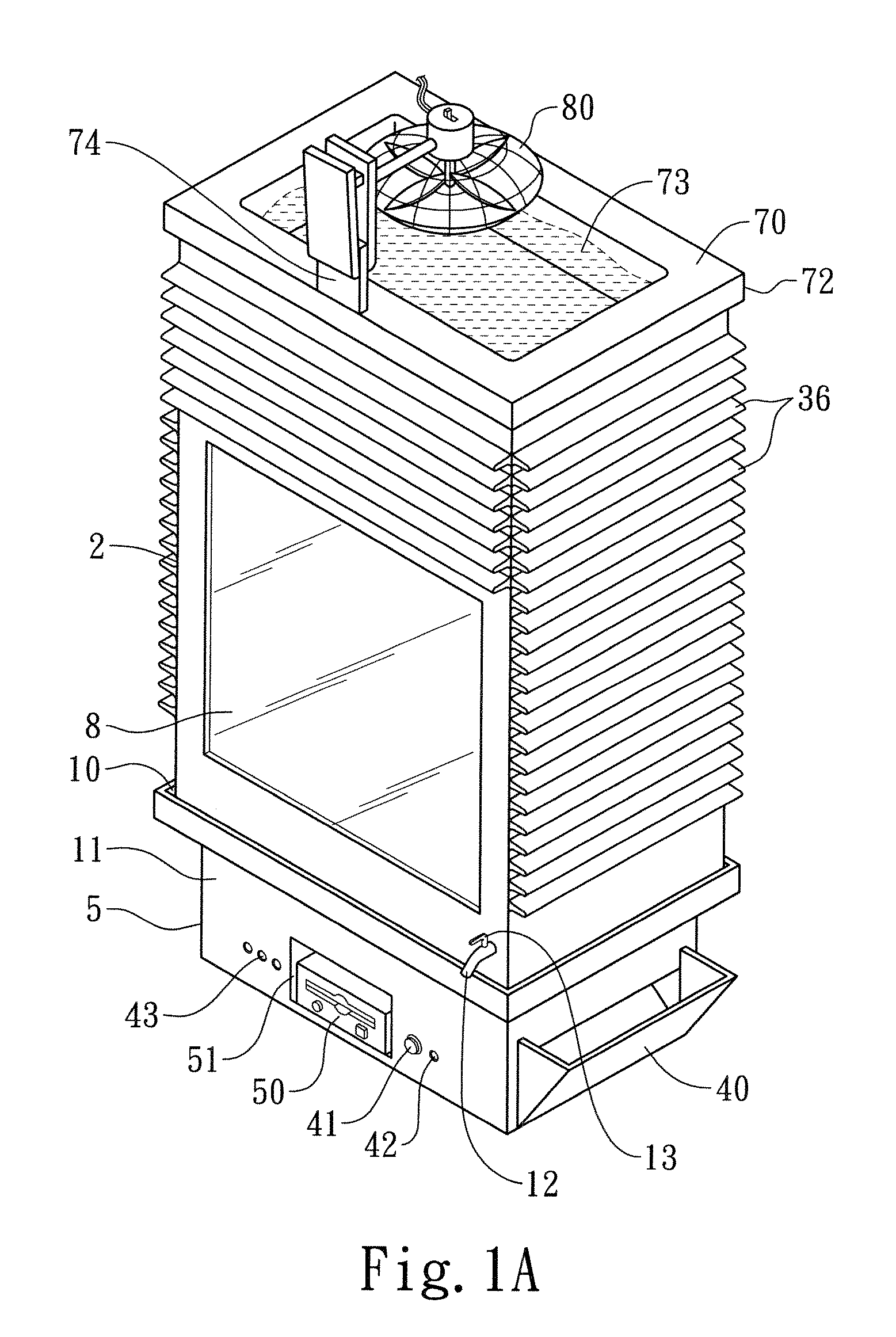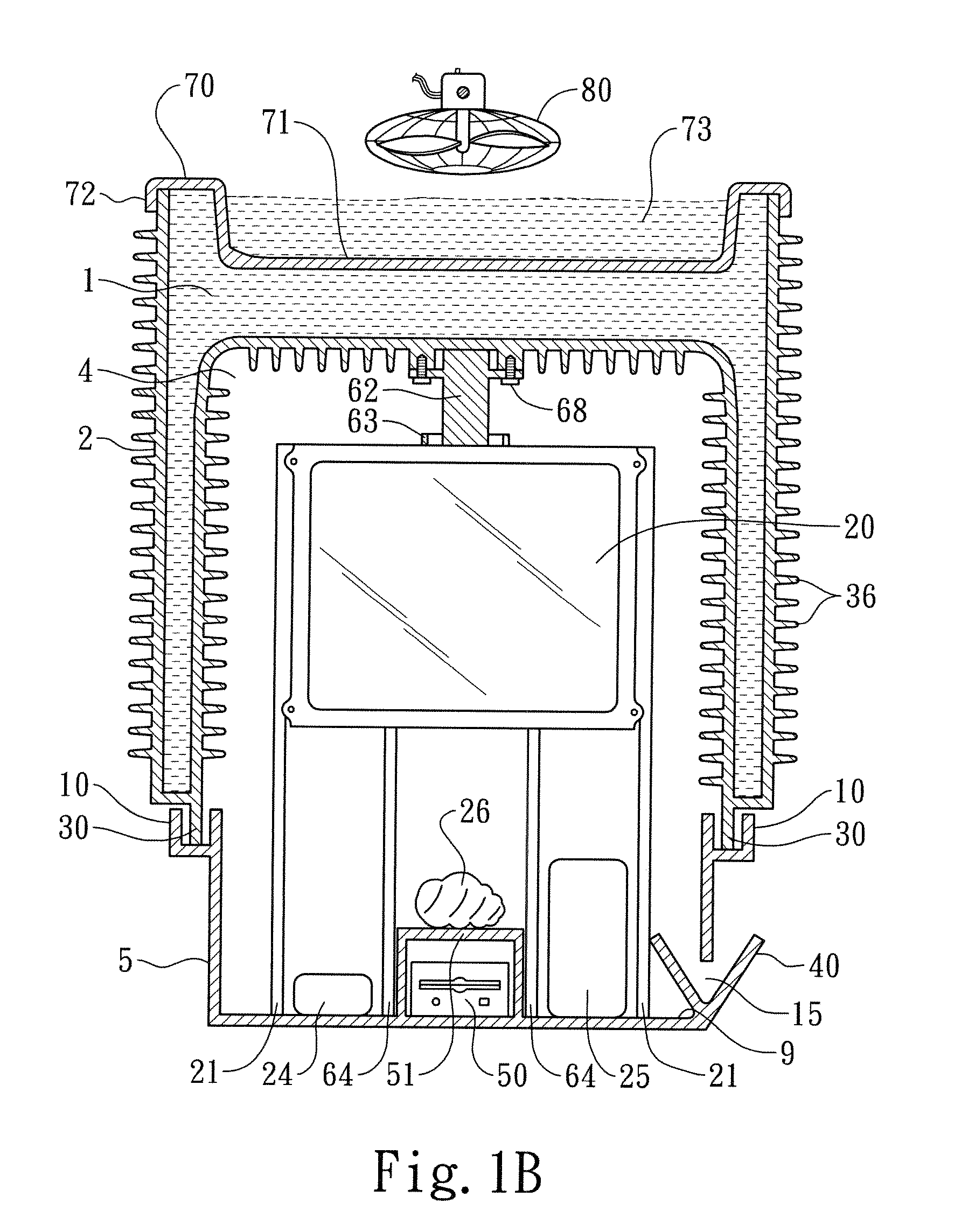Enclosure for Confining the Released Chemicals of Electrical Devices
a technology for electrical devices and enclosed enclosures, which is applied in the direction of electrical apparatus casings/cabinets/drawers, instruments, gaseous cathodes, etc., can solve the problems of worrisome, flame retardant suspected of causing health problems, and blood samples of flame retardants around the world, so as to achieve convenient disassembly
- Summary
- Abstract
- Description
- Claims
- Application Information
AI Technical Summary
Benefits of technology
Problems solved by technology
Method used
Image
Examples
Embodiment Construction
[0075]A preferred embodiment of the present invention is shown in FIGS. 1A-1I. As shown in FIG. 1A, it is an enclosure for a personal computer. It has two members. It has a top member 2 and a bottom member 5. Both members are made from aluminum. Aluminum is the preferred material due to its good thermal conductivity and its resistance to water corrosion. Other heat conductive and water resistant materials could be used, such as copper or ceramic.
[0076]As shown in FIG. 1B, lining most of the top member 2 are fins 36. The fins 36 improve the thermal absorption and dissipation of the enclosure. The fins 36 face inward in the enclosed space 4 and outward on the outside.
[0077]The top member 2, which can hold material, is hereinafter referred to as the vessel. The bottom member 5 on which electrical devices are secured or placed is hereinafter referred to as the base.
[0078]As shown in FIG. 1A, the base 5 is rectangular and trough shaped. The base 5 has a perimeter wall 11 around its perim...
PUM
 Login to View More
Login to View More Abstract
Description
Claims
Application Information
 Login to View More
Login to View More - R&D
- Intellectual Property
- Life Sciences
- Materials
- Tech Scout
- Unparalleled Data Quality
- Higher Quality Content
- 60% Fewer Hallucinations
Browse by: Latest US Patents, China's latest patents, Technical Efficacy Thesaurus, Application Domain, Technology Topic, Popular Technical Reports.
© 2025 PatSnap. All rights reserved.Legal|Privacy policy|Modern Slavery Act Transparency Statement|Sitemap|About US| Contact US: help@patsnap.com



